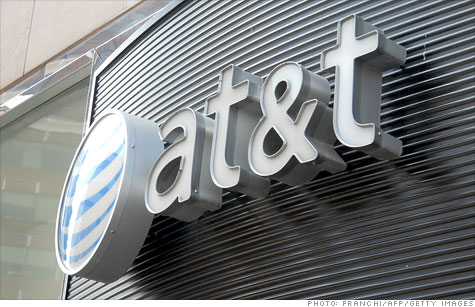Search News

NEW YORK (CNNMoney) -- AT&T on Wednesday shed more light on the long-awaited 4G network it will launch this summer, naming the first cities that will get access: Dallas, Houston, Chicago, Atlanta and San Antonio.
AT&T plans on adding another "10 or more" markets in the second half of the year, but it didn't say which markets they will be. The company says its Long Term Evolution (LTE) service will be available to 70 million Americans by the end of 2011.
But here's where things get confusing: AT&T already offers a 4G-branded network. That network runs on a different, "HSPA+" standard, which is actually a 3G standard, but has been shown to deliver speeds on par with -- or faster than -- LTE.
Yes, that's right: AT&T's current 4G offering could, in some instances, be faster than its soon-to-be-released, new 4G network.
"Depending upon a user's location and configuration of cell sites nearby, HSPA+ could exceed -- or even radically exceed -- speeds achieved with LTE," said Dan Hays, telecom consultant at PRTM.
LTE is theoretically capable of delivering speeds of 73 megabits per second, faster than the 42 Mbps that HSPA+ could potentially deliver. And unlike HSPA+, LTE is technically a 4G wireless technology. Verizon's LTE network, for instance, is being branded as 4G-LTE.
T-Mobile launched its own 42-Mbps-capable network this week, and the company said it has found HSPA+ to deliver real-world speeds of between 5 and 12 Mbps. Verizon's LTE network has been shown to produce real-world speeds in exactly the same range, of 5 to 12 Mbps.
AT&T wouldn't disclose how fast it expects its LTE network will perform, but the technology and the equipment vendors used to deploy the network are essentially the same as Verizon's (VZ, Fortune 500). Experts believe the same 5-12 Mbps range is likely.
Adding one more bit of confusion to this kerfuffle, AT&T's current 4G HSPA+ network has the capability for speeds matching T-Mobile's 5-12 Mbps -- but that capability hasn't been turned on yet. The company said it has "aggressive plans" to install the enhanced backhaul needed to enable those kind of speeds, which should be available for about two-thirds of AT&T's mobile broadband traffic by the end of the year.
AT&T (T, Fortune 500) doesn't see any of this 4G branding and speed confusion as a problem. In fact, it said it gives the company a leg up over its rivals.
"When our customers go back to HSPA+ in places where LTE isn't available, they will still have very fast speeds," said Mark Siegel, spokesman for AT&T. "When customers on one of our competitors' networks go from 4G to 3G, there's a dramatic drop-off."
Yet the branding and speed issues may prove tricky for customers to get their heads around: What will AT&T call its LTE network? 4G+? Will it stop branding its HSPA+ network as 4G? Will they both be called 4G? What happens when one 4G network offers faster speeds than the other?
"Certainly there's tremendous potential for consumer confusion," Hays said. "AT&T is in a bit of a predicament when it comes to branding. It seems like they've backed themselves into a corner."
Managing the handoffs between the networks has become a critical part of AT&T customers' experience. For instance, experts say phones and wireless modems could potentially be designed with intelligence to always pick the fastest network.
If AT&T handles the situation well, it should be a seamless transition for most customers. But if it's bungled, 4G could become an even more confusing mess than it already is. ![]()